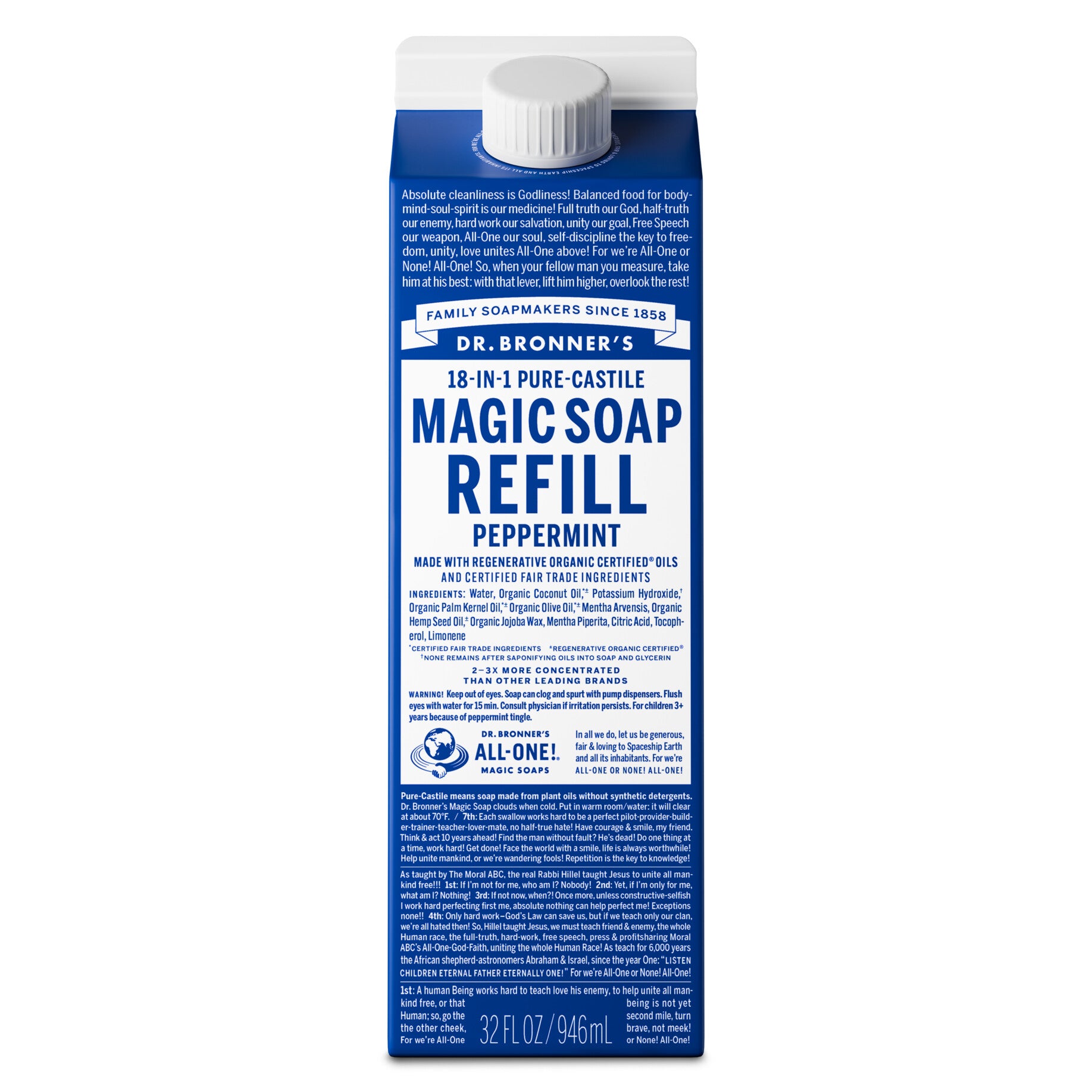If you care about what goes into your body and where it comes from, you may have heard about Regenerative Organic Certified® (ROC™). It’s more than a seal—it’s a movement to reshape agriculture in a way that treats animals with respect and lifts up farmers and workers. For brands like Dr. Bronner’s, ROC is a critical tool in delivering on promises of sustainability, ethics, and quality.
What Is Regenerative Organic Certified®
Regenerative Organic Certified® (ROC™) is a third-party certification overseen by the nonprofit Regenerative Organic Alliance (ROA). It builds on organic certification—meaning all ROC farms and producers must first meet USDA Organic standards (or recognized international equivalents)—and then layers on additional requirements in three key pillars: Soil Health & Land Management, Animal Welfare, and Farmer & Worker Fairness.
ROC also uses a tiered framework—Bronze, Silver, and Gold—which encourages farms and brands to progress over time toward more rigorous practices. Bronze denotes foundation-level compliance; Silver indicates stronger adoption; Gold represents the highest standard across all pillars.
Origins & Development: How ROC Came to Be
ROC was founded in 2017 by a coalition including the Rodale Institute, Dr. Bronner’s, Patagonia, and other organizations focused on animal welfare, sustainable farming, and social justice. As “regenerative” became a popular but vague term, these groups created a certification with auditing, transparency, and real metrics to avoid greenwashing.
In 2019, ROC ran a pilot program with roughly 19 farms and brands—spanning dairy, mangoes, grains, and more, across multiple countries. The pilot helped identify real-world challenges, gather feedback, and refine the ROC framework.
All operations applying for ROC must develop a Regenerative Organic System Plan (ROSP) and undergo third-party audits to verify compliance, including chain-of-custody documentation and governance requirements.
Why It Matters: Benefits for Farming, Brands, and Consumers
For the Land and Climate
Soil health & biodiversity: ROC requires practices that build soil organic matter, reduce erosion, support microbial life, and promote biodiversity in both flora and fauna. Healthier soil stores carbon, holds water, and strengthens resilience against droughts, floods, and climate extremes.
Reduced synthetic inputs & disturbance: Practices like cover cropping, crop rotations, agroforestry, and reduced tillage help decrease reliance on synthetic fertilizers and intensive tillage that degrade soil over time.
For Animal Welfare
ROC goes beyond minimal compliance. Animals on ROC farms must have meaningful pasture access, space to move, and care that respects natural behaviors. Operations relying on industrial confinement models do not meet ROC standards.
For Fairness and People
ROC includes requirements for safe working conditions, fair wages, freedom of association, and overall social fairness—ensuring the system benefits the people who do the hard work, not just the land and animals.
Transparency is central: chain-of-custody and documentation allow consumers to trace what they are buying.
How ROC Changes What Consumers Buy
- Carefully grown ingredients: ROC-certified oils, fruits, and other ingredients promote soil health and climate resilience, ensure fair prices for farmers, support living wages and excellent working conditions, and invest in communities.
- Real assurance vs. greenwashing: Because ROC is audited, there are clear rules for using the name and seal, including labeling requirements—reducing vague claims like “regenerative” or “sustainable” without proof.
- Premium value that aligns with values: ROC-certified products may cost more, reflecting practices that benefit the environment, animal welfare, and social justice—an investment many consumers find meaningful.
Dr. Bronner’s Role: Trailblazing with ROC
Dr. Bronner’s is a founding organization of ROC and helped shape the framework and standards.
- In 2019, Dr. Bronner’s piloted ROC standards on three key ingredients—coconut oil (Serendipol, Sri Lanka), palm oil (Serendipalm, Ghana), and mint oil (Pavitramenthe, India)—each of which earned ROC Silver designation early on.
- Dr. Bronner’s first ROC product, Whole and White Kernel Virgin Coconut Oil, launched in 2020—demonstrating that large-scale ROC supply chain integration is achievable while maintaining ethical and environmental standards.
- Today, Dr. Bronner’s Liquid & Bar Magic Soaps are made with Regenerative Organic Certified® oils—our blend of coconut, palm, palm kernel, olive, and hemp seed oils have been converted to ROC and is stated on the front of product labels.
The Future: What ROC Is Driving
- Scale: ROC aims to bring millions more acres under regenerative organic practices. As more farms, especially in the Global South, adopt the standard, environmental impact grows.
- Brand transformation: Brands will increasingly meet consumer expectations regarding climate action, fairness, and animal welfare—ROC provides a framework for that shift.
- Shifting norms in policy: As private standards like ROC gain traction, they can influence public policy, subsidies, and research priorities toward more regenerative systems.
Closing Thought
Regenerative Organic Certified® is changing agriculture and brands in a meaningful way. It’s not just about making products that are “less bad”—it’s about creating systems that are healing, regenerative, and fair. When you see the ROC seal on a product, know it represents something more: a commitment to good land, good animals, and good people. When products are made with intention, your choices have power.



